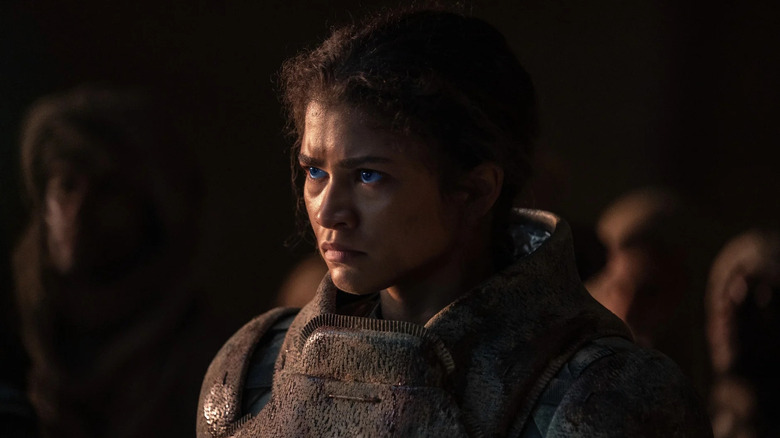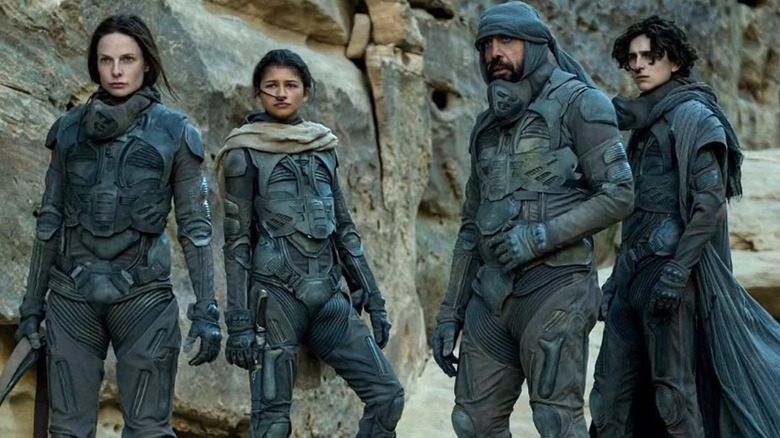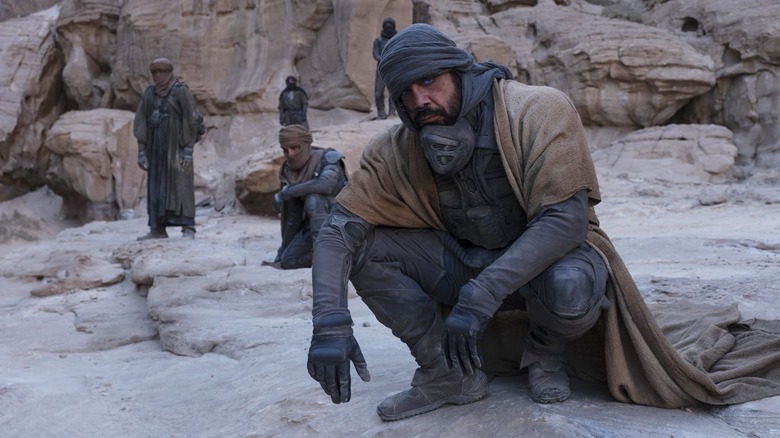How Many Words Really Make Up The Dune Movies' Fictional Fremen Language
Quite a bit of work goes into making the worlds of science fiction and fantasy films feel lived-in and "real" enough for the audience to suspend their disbelief. One of the best ways to add some authenticity to a fictional world is to add a constructed language (often called a "conlang") with a few words or phrases to pepper in with the regular dialogue. Conlangs have been around forever, like the languages that author J.R.R. Tolkien created for his "Lord of the Rings" books and the Klingon language created for the "Star Trek" franchise, helping fans really get into these fictional worlds. Frank Herbert's "Dune" novels contained a few words from the language Chakobsa, spoken by the Indigenous people of Arrakis, the Fremen, but there wasn't quite enough there to use reliably in Denis Villeneuve's "Dune" and "Dune: Part Two." That's where linguists (and married couple) David and Jessie Peterson came in, developing a grammatical structure and vocabulary for Chakobsa for the actors to speak that would actually sound like a language and not just some random sounds cobbled together.
Language can really make a huge impact on a film in many ways — heck, even star Timothée Chalamet and Villeneuve spoke French for the duration of the shoot because it gave them "a bubble" of privacy and comfort! But how far did the Petersons go with regard to creating a real Chaksoba language with a functional vocabulary? The two spoke to reporters for several trades to promote "Dune: Part Two," and their contributions are truly impressive.
The complications in creating a language
Here's the thing about creating a fictional language: you can't just throw a bunch of made-up sounds together and expect it to sound right. That's why the Petersons created grammar rules for Chakobsa so they would know how to construct sentences, conjugate verbs, and more. With a structure similar to that of Latin in place, they were then able to create a vocabulary of around 700 words (not including variations on those words). That wasn't always an easy task, as the Petersons had the fragments from Herbert's novels to draw on and they were kind of a mess. David Peterson told IndieWire:
"A lot of [Chakobsa] is just borrowed kind of haphazardly from different languages. We just had to come up with our own system and incorporate it as best we could."
The duo changed a few words from Herbert's novels but mostly managed to weave them into the basic vocabulary, which incorporates elements of Arabic, Hebrew, Romani, and more into the language we hear the desert-dwelling Fremen speak on screen. 700 words might seem like a lot, but how much is that in the grand scheme of things, anyway?
Words, words, words
They've collaborated on the Na'vi language for James Cameron's "Avatar" films, and David Peterson worked on developing Dothraki for "Game of Thrones" (along with the Firish language for Pixar's "Elemental"), but their contributions to "Dune: Part Two" seem pretty expansive. However, compared to many older conlangs, the Fremen's vocabulary is a little paltry. For example, Tolkein's Quenya, which is spoken by the Elves in "The Lord of the Rings," has about 2000 words, while Klingon has approximately 5,000 words. Both of those had a bit more time to be developed, though, so maybe Chakobsa will be further developed with time.
How do these languages stack up against languages in actual, real-life usage? American English has somewhere around 470,000 words currently in use, which is kind of intense to think about. Conlangers definitely have their work cut out for them.


